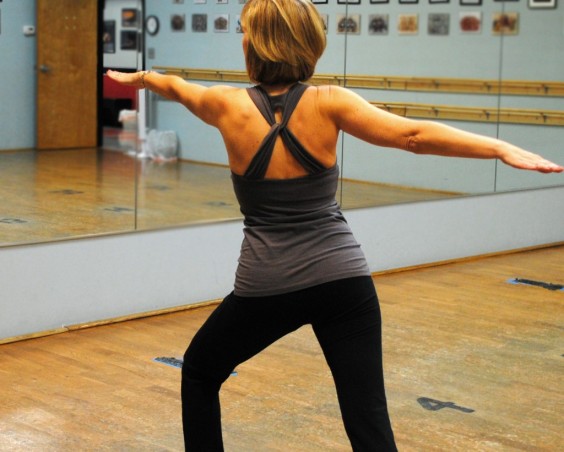Many of those lucky enough to survive a stroke find that they‘re soon faced with another serious challenge. Nearly one-quarter will develop symptoms of post-traumatic stress disorder, according to a new study. 

The data show that experiencing a life-threatening health crisis can pose serious psychological challenges, said study lead author Donald Edmondson, an assistant professor of behavioral medicine at Columbia University Medical Center in New York City.
Although post-traumatic stress disorder (PTSD) typically is associated with combat veterans and sexual assault survivors, the researchers discovered that patients who develop a serious health condition followed by intense treatment may have mental problems that frequently go unrecognized by physicians and family members.
The study, published online June 19 in the journal PLoS ONE, also found that people who develop PTSD after a stroke could have a greater risk for heart problems or another stroke because of the psychological issues they endure.
PTSD is an intense physical and emotional response to a life-threatening or traumatic event. The symptoms fall into three broad types: reliving the event, avoiding usual activities and hyperarousal, according to the U.S. Centers for Disease Control and Prevention.
For Peter Cornelis, 62, the trauma of enduring a series of strokes followed by brain surgery left him unable to move for months. He remembers lying in bed mentally designing paintings to help him occupy endless hours with nothing to do.
Over the past four years, he has been slowly rehabilitated, and he now walks with a cane. Although he leads an art class at the local community center in Wantagh, N.Y., he avoids going outside as much as possible, because he suffers from PTSD.
Cornelis said he has little control over his emotions -- from crying when he reads a sentimental greeting card to laughing at nothing at all. Sometimes he blows up without knowing why. He is anxious around people, worrying about how he‘ll react and how others will respond to him. "And I‘m afraid," he said. "Could I have another stroke? Can I make plans for the future?"
But people think he has recovered, Cornelis said. "I look fine, talk perfectly," he said.
Cornelis is not alone. Each year, nearly 300,000 stroke survivors will develop PTSD symptoms because of their health scare, the researchers said. Twenty-three percent will develop PTSD symptoms, and for about 11 percent, the condition will become chronic.
For the study, the researchers analyzed nine prior studies of stroke or transient ischemic attacks (TIAs), which are blood vessel blockages that break up quickly and dissolve without lasting damage. Together, the studies included more than 1,100 survivors who were either interviewed or given questionnaires.
PTSD is triggered in people who have strokes and TIAs by a variety of sequential factors, Edmondson said. First, there is a significant, terrifying, life-threatening event that is often accompanied by internal cues, such as a rapid heart rate and high blood pressure. "It‘s called the fight or flight response, and it‘s our innate response to fear," he said. An emotional ambulance ride, invasive tests, hospitalization and sometimes surgery follow.
Next, people must adjust to the shock of what has just happened, Edmondson said. "We walk through our lives with the naive belief that we‘re invulnerable," he said. "Often what is traumatic [about a stroke or heart attack] is that such unspoken assumptions are broken."
And once home, physical and environmental cues can stimulate the fear response all over again. Unlike a soldier who can leave the battlefield, stroke patients typically return to the place where the crisis occurred. Many patients may simply see the living room chair where they had the stroke and immediately feel PTSD symptoms.
Flashbacks, nightmares, palpitations, chills, and elevated heart rate and blood pressure may occur for months or years after their return home, Edmondson said. Severe anxiety, headaches and outbursts of anger also are likely for patients with PTSD.
"PTSD is a huge detriment to quality of life, a debilitating disorder in its own right, and deserves to be treated," said Edmondson.
Edmondson said that although the research does not show that strokes cause PTSD, he thinks it comes close. "You can‘t develop PTSD without a life-threatening event," he said. "Having PTSD can‘t cause a stroke a month ago, so this research is some of the strongest causal evidence we have."
Dr. Rafael Ortiz, director of the division of neuroendovascular disease and stroke at Lenox Hill Hospital in New York City, said he thinks this is the first time PTSD has been so closely associated with strokes and TIAs. "It‘s important that after suffering from a stroke, people are taken care of by a comprehensive team of doctors and other specialists, including psychologists and nurses who are very well-trained," he said.
Edmondson encouraged patients and family to talk with their physicians about PTSD. "I really hope this research lets survivors and their family members know it‘s not weird and it‘s nothing to be ashamed of," he said. "It‘s treatable. Tell somebody."
More information
Visit www.kurriosity.com

